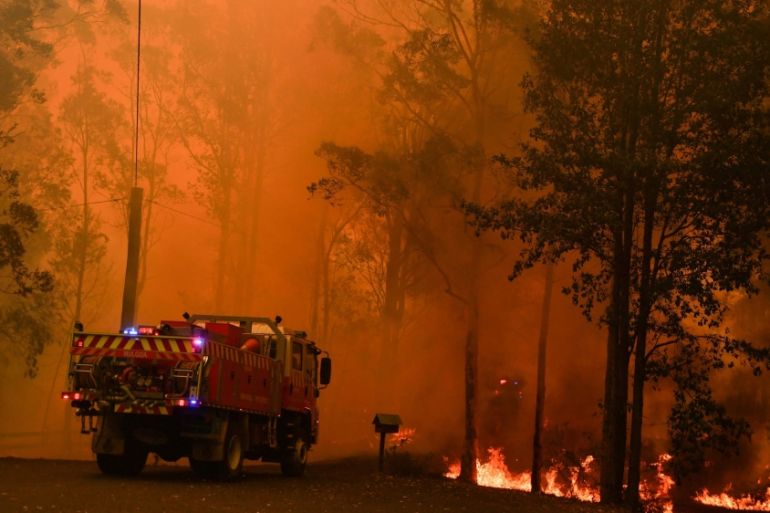Proactive Residential Or Commercial Property Security: Leveraging the Insights of a BAL Report
Proactive Residential Or Commercial Property Security: Leveraging the Insights of a BAL Report
Blog Article
Just How BAL Record Impacts Shrub Fire Protection Procedures
In the realm of bush fire defense, the Building Assault Degree (BAL) record stands as an essential tool that significantly influences the safety and security and durability of homes in fire-prone locations - BAL Report. The influence of a BAL assessment prolongs much past simple documentation; it works as the foundation for establishing the appropriate building criteria and fire protection procedures required to reduce the threats positioned by bushfires. As communities come to grips with increasingly severe fire seasons, comprehending exactly how the BAL record shapes these safety procedures ends up being critical for policymakers, homeowners, and builders alike
Comprehending the Bushfire Attack Degree

Value of BAL Report Evaluation

Additionally, the BAL record analysis works as a foundational action in abiding by legal responsibilities and demands associated to bushfire security. Regional councils and authorities usually mandate the entry of a BAL record as component of the preparation and building approval process to ensure that buildings are effectively guarded versus bushfire threats. Falling short to conduct a complete BAL record evaluation can lead to insufficient defense actions, leaving residential or commercial properties vulnerable to devastating bushfire occurrences.
Building Specifications Based on BAL
An extensive understanding of the Bushfire Assault Level (BAL) allows building owners to execute construction standards tailored to their details risk profile. Construction criteria based on BAL are crucial in mitigating the impact of bushfires on buildings. The BAL ranking classifies the potential threat a residential or commercial property deals with during a bushfire on a range from BAL-Low to BAL-FZ (Flame Zone)
Applying Fire Defense Actions
With the structure of building standards based upon Bushfire Strike Degree (BAL) in place, the emphasis currently shifts towards the sensible application of fire protection actions to fortify buildings versus bushfire dangers. Implementing fire defense steps involves a mix click for info of passive and active strategies to boost the resilience of buildings in bushfire-prone locations. Passive procedures include making use of fireproof structure products, setting up cinder guards on vents, securing voids in wall surfaces and roofings, and maintaining a clear room around the property without flammable vegetation. Energetic steps include having firefighting tools conveniently offered, such as hoses and water pumps, in addition to creating a defendable area around the building by clearing greenery and having a properly maintained garden. Additionally, establishing an emptying strategy and guaranteeing all citizens know emergency procedures are essential elements of efficient fire defense actions. By integrating both passive and energetic strategies, residential or commercial properties can substantially lower their vulnerability to bushfire cases and raise the safety of occupants.
Safeguarding Homes Versus Bushfires
Successfully securing homes against the harmful impacts of bushfires needs a extensive and positive approach to fire security actions. Home owners pop over to this site living in bushfire-prone locations need to focus on the implementation of numerous approaches to enhance their property's durability versus wildfires. One essential element is producing a defensible room around the home by maintaining a clear zone devoid of combustible materials. This includes regularly cutting vegetation, eliminating dead plants, and ensuring a safe distance in between frameworks and trees. Mounting fireproof roofing materials can also considerably minimize the threat of ember attacks and straight fire contact. Additionally, sealing spaces and vents to stop coal intrusion, as well as incorporating fire-resistant doors and home windows, can aid fortify the home's defense versus bushfires. Spending in a dependable water resource, such as a properly maintained lawn sprinkler or a devoted water tank, is vital for providing water throughout fire emergency situations - BAL Report. By welcoming an aggressive position and integrating these protective measures, homeowners can considerably enhance their opportunities of safeguarding their homes versus bushfires.
Verdict
In final thought, important source the Bushfire Strike Level (BAL) report plays an essential function in determining the needed defense procedures against bushfires. Carrying out fire defense measures based on the BAL report is necessary in safeguarding homes from possible bushfire threats.
In evaluating bushfire danger to buildings, comprehending the Bushfire Assault Level (BAL) is an essential part for implementing reliable security actions. Generally, a clear understanding of the Bushfire Attack Degree is essential for executing sufficient defense steps and mitigating the influence of bushfires on properties.

Report this page